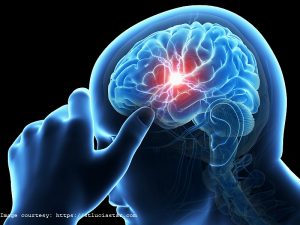- Home
- Editorial
- News
- Practice Guidelines
- Anesthesiology Guidelines
- Cancer Guidelines
- Cardiac Sciences Guidelines
- Critical Care Guidelines
- Dentistry Guidelines
- Dermatology Guidelines
- Diabetes and Endo Guidelines
- Diagnostics Guidelines
- ENT Guidelines
- Featured Practice Guidelines
- Gastroenterology Guidelines
- Geriatrics Guidelines
- Medicine Guidelines
- Nephrology Guidelines
- Neurosciences Guidelines
- Obs and Gynae Guidelines
- Ophthalmology Guidelines
- Orthopaedics Guidelines
- Paediatrics Guidelines
- Psychiatry Guidelines
- Pulmonology Guidelines
- Radiology Guidelines
- Surgery Guidelines
- Urology Guidelines
High-intensity step training boosts walking skills of stroke survivors

High-intensity step training that mimics real-world conditions may better improve walking ability in stroke survivors compared to traditional, low-impact training, according to new research published in the American Heart Association's journal Stroke.
"People who suffer strokes often have difficulty walking and impaired balance. Rehabilitation after a stroke traditionally focuses on patients practising low-intensity walking, usually only in a forward direction, which does not provide enough of a challenge to the nervous system to enable patients to negotiate real-world situations, such as uneven surfaces, stairs or changing direction," said study author T. George Hornby, Ph.D., professor of physical medicine and rehabilitation at Indiana University School of Medicine in Indianapolis. "Our study suggests that stroke patients can perform higher intensity walking exercises and more difficult tasks than previously thought possible. We need to move beyond traditional, low-intensity rehabilitation to challenge the nervous and cardiovascular systems so patients can improve function and perform better in the real world."
Researchers evaluated 90 people, 18- to 85-years-old with weakness on one side of the body who had survived a stroke at least six months prior.
Participants received training of either high-intensity stepping performing variable, difficult tasks; high-intensity stepping performing only forward walking; or low-intensity stepping of variable tasks. Variable tasks included walking on uneven surfaces, up inclines and stairs, over randomly placed obstacles on a treadmill and across a balance beam.
The researchers found:
- Survivors in both the high-intensity, variable training and high-intensity, forward walking groups walked faster and farther than the low-intensity, variable training group.
- For all walking outcomes, 57% to 80% of participants in the high-intensity groups had important clinical gains, while only 9% to 31% of participants did so following low-intensity training.
- High-intensity variable training also resulted in improved dynamic balance while walking and improved balance confidence.
Hornby noted that no serious adverse events occurred during the training sessions, suggesting stroke survivors can be pushed to higher intensity walking with more variable tasks during rehabilitation.
"Rehabilitation that allows walking practice without challenging the nervous system doesn't do enough to make a statistical or clinically significant difference in a patient's recovery after a stroke," Hornby said. "We found that when stroke patients are pushed harder, they see greater changes in less time, which translates into more efficient rehabilitation services and improved mobility."
Ultimately, their goal is to incorporate high-intensity variable step training into regular clinical rehabilitation protocols.
The study was small compared to larger, multicenter clinical trials. Hornby said the next step would be to test high-intensity, variable step training in larger patient populations in a large, multicenter clinical trial.
For more details click on the link: http://dx.

Disclaimer: This site is primarily intended for healthcare professionals. Any content/information on this website does not replace the advice of medical and/or health professionals and should not be construed as medical/diagnostic advice/endorsement or prescription. Use of this site is subject to our terms of use, privacy policy, advertisement policy. © 2020 Minerva Medical Treatment Pvt Ltd